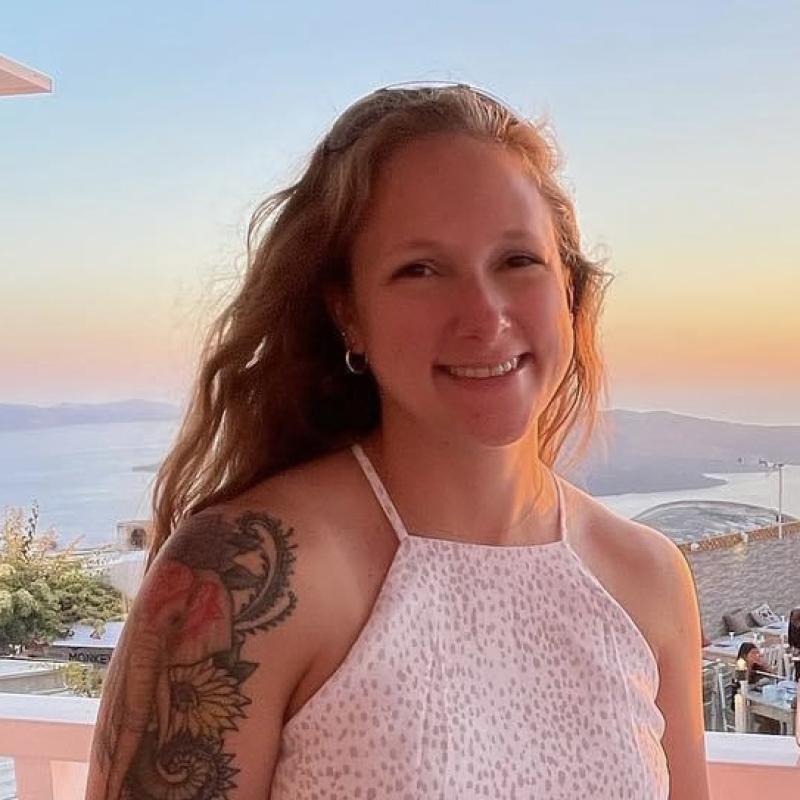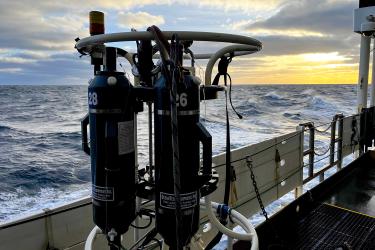Did you know our Bottom Trawl Survey operates 24 hours a day? To split the around-the-clock survey duties and make it more manageable, the science team operates in two 12-hour watches. Day watch runs from noon until midnight and night watch runs from midnight until noon. So what do we do when we’re not on-watch and working? The most common pastime: reading!
This fall we’re celebrating the 60th anniversary of the Bottom Trawl Survey. In 1963, the top-selling fiction books on the New York Times list was:
- Seven Days in May by Fletcher Knebel
- Raise High the Roof Beam, Carpenters by J. D. Salinger
- The Glass-Blowers by Daphne du Maurier
- The Shoes of the Fisherman by Morris West
- The Group by Mary McCarthy
I wonder how many scientists on the very first Bottom Trawl Survey in the fall of 1963 read these best sellers? I wonder what they might read today? Maybe it would be one of the books we read during the fall 2023 survey. Here’s what we were reading.
Katherine McGinnis
Katy is a chief survey technician with NOAA’s Office of Marine and Aviation Operations. She read DEEP: Freediving, Renegade Science, and What The Ocean Tells Us about Ourselves by James Nestor.
“I chose to read DEEP by James Nestor because I wanted a better understanding of free diving and to learn the science behind it.”
Bill Duffy
Bill is a port agent in NOAA Fisheries Greater Atlantic Fisheries Office’s Port Programs Branch. He read Macabre Trophies by Declan Rush.
“Macabre Trophies is a book by a local author and a good friend. After reading the novel, I’m sure that Declan will have much more to offer and I’m very happy to be supporting local artists.”
Joey Dunphy
Joey is a biological technician in our Ecosystems Survey Branch. He read The Underworld: Journeys to the Depths of the Ocean by Susan Casey.
“Submarines are awesome! And I really enjoy reading about the marine environment and underwater exploration.”
Catherine Foley
Catie is a fisheries biologist in our Ecosystems Survey Branch. She read Because Internet: Understanding the New Rules of Language by Gretchen McCulloch.
“I never thought much about linguistics... until I read my first linguistics book a few years ago. Now I think about every single word choice I make. So a book about how internet culture has shaped language? That's a must-read for me!”
Dana Morton
Dana is a fisheries biologist in our Ecosystems Survey Branch. She read God Emperor of Dune by Frank Herbert.
“I love the Dune series because of all the ecology and complex life cycles!”
Jakub Kircun
Jakub is a biological science technician in our Ecosystems Survey Branch. He read History of the Apostolic Church: With a General Introduction to Church History by Philip Schaff.
“I have an interest in early church history (A.D. 30–100) and the prominent German-American bible scholar Schaff of the Mercersburg seminary (in Pennsylvania) provides a comprehensive tome full of information including government, doctrines, theology, etc.”
Adam Poquette
Adam is a port agent with NOAA Fisheries Greater Atlantic Fisheries Office’s Port Programs Branch. He read A Short History of Nearly Everything by Bill Bryson.
“With the guarantee that you'll know ‘nearly everything’ after reading this book, why would you read anything else?”
Katie Rogers
Katie is a biological science technician in our Population Biology Branch. She read The Treeline: The Last Forest and the Future of Life on Earth by Ben Rawlence.
“Recommended to me by a friend, this book was both fascinating and distressing. It explores the intricate relationships between forests and their surroundings, and the strong impact that the changing climate is having around the world.”
Bridget St. Amand
Bridget is the Mid-Atlantic Operations Specialist in our Fisheries Monitoring Operations Branch. She read The Body Keeps the Score: Brain, Mind, and Body in the Healing of Trauma by Bessel van der Kolk M.D.
"I enjoy psychology and care a lot about veterans' issues so the book The Body Keeps the Score was a perfect crossover of those two interests."
Liz Ouellette
Liz is the Data Quality Specialist in our Training and Data Quality Branch. She finished reading The Institute by Stephen King, and also read Thirteen Reasons Why by Jay Asher.
“I'm a massive Stephen King fan. I picked up The Institute last year and hadn't read it yet, so it was a must-bring for me when I sailed!”
Maggie Mahoney
Maggie is a Biological Technician in our Population Biology Branch. She read The Poacher's Son by Paul Doiron.
“The Poacher’s Son is the first book in a series recommended to me by my aunt. An easy read with interesting twists in a manhunt through the Maine wilderness for a game warden’s father accused of murder.”









